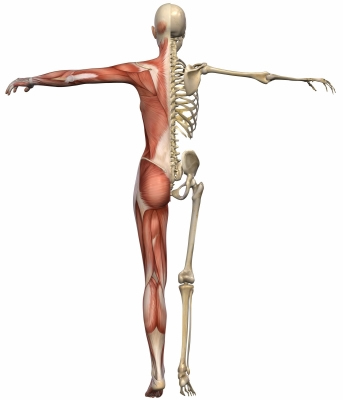Sciatica Caused by Disc Herniation
Sciatica that is caused by disc herniation is typically precipitated by a lifting or twisting injury. This type of sciatica will often cause pain to shoot down the leg whenever the person coughs or sneezes.
Sciatica caused by disc herniation can be identified by:
- Applying the Valsalva Maneuver in which you are asked to cough or bear down, as during a bowel movement. If you have a herniated or bulging disc, you will experience pain shooting down the leg.
- Identifying changes in sensation at dermatome sites (areas of the body that are associated with the pairs of dorsal nerve roots from the spine) which are specific to the disc that is ruptured.
- Noting changes in deep-tendon reflexes caused by disc herniation. By checking deep-tendon reflexes, the physician is able to obtain information about the integrity of both the peripheral and central nervous systems.
Typically, decreased tendon reflexes indicate that there is a problem with the peripheral nervous system, while increased reflexes indicate a problem with the central nervous system.
Fortunately, the majority of cases of sciatica that is caused by disc herniation do not require surgical intervention, and can be resolved by techniques such as Active Release Techniques (ART).
Copyright: Dr. Brian Abelson and Kamali Abelson. From the book – Release Your Pain.
Sciatica Caused by Foramina Compression
Foramina compression occurs when the nerve roots in the lumbar spine get ‘hung-up’ or restricted within an area known as the vertebral foramina.
These foramina are passageways through the bones of the vertebrae, and through which the nerve roots pass from the spine into the rest of the body. The size of the foramina varies depending upon its location.
Nerve compression in this area can be caused by bone compression (due to arthritic changes), disc herniation, scar tissue, or excessive ligament development.
Conventional medical procedures for resolving this problem requires surgical intervention (foraminotomy) to remove the pressure on the nerve roots.
However, when restrictions are caused by soft-tissue obstructions, it is possible to address this problem with Active Release Techniques. These special procedures are taught in the ART Long Tract Nerve Course.
The nerve-gliding procedures use specific patient motions with hands-on procedures to free up the restrictions at the foramina. When sciatica and all its related symptoms are due to foraminal soft-tissue restrictions, patients will typically see some improvement after each treatment.
ART cannot remove degenerative causes of foraminal compression, but it can remove some of the mechanical stress on the spine and aid in improving spinal stability; this is often enough to reduce pain and improve overall function.
Copyright: Dr. Brian Abelson and Kamali Abelson. From the book – Release Your Pain.
Sciatica and Spinal Stenosis
Spinal stenosis occurs when the spinal canal narrows and compresses the spinal cord and the nerves that branch out from that spinal cord. It is often caused by factors such as: disc herniations, thickening of ligaments, trauma (motor vehicle accidents), and spinal tumors.
Spinal stenosis is characterized by one or more of the following symptoms:
- Leg pain that worsens with walking and improves with bending forward or sitting. Typically this pain occurs on one side of the body, with the degree of pain being subject to the degree of impingement or restriction.
- Muscle cramping in the legs. The cramping worsens when walking downhill and improves when leaning forward.
An MRI (Magnetic Resonance Imaging) is usually needed to determine if you have spinal stenosis. Normal x-rays are not sufficient for ruling out spinal stenosis.
Serious or severe cases of spinal stenosis do require surgical intervention, but mild to moderate cases respond very well to Active Release Techniques, exercise, and activity management.
ART cannot remove the cause of spinal stenosis, but it can remove much of the mechanical stress on the spine and aid in improving spinal stability – often enough to reduce pain and improve overall function.
Copyright: Dr. Brian Abelson and Kamali Abelson. From the book – Release Your Pain.
 Sciatica and Soft-Tissue Compression Syndromes
Sciatica and Soft-Tissue Compression Syndromes
Sciatica is frequently caused by soft-tissue compression of the sciatic nerve somewhere along its length (peripheral nerve entrapment) such as in Piriformis Syndrome.
The piriformis muscle is an external rotator of the hip and leg, and helps to turn the foot and leg outward. This muscle often becomes tight and restricted when it is overworked, resulting in compression of the sciatic nerve.
The most common sciatic nerve entrapment sites include adhesion of the sciatic nerve:
- At the long head of the biceps femoris.
- Between the adductor magnus and hamstring muscles.
- Between the sacral ligaments.
- Between the structures of the external hip rotators.
- At the superior gemellus muscle where the sciatic nerve
passes over the muscle.
- At the piriformis muscle where the sciatic nerve passes under
or through the muscle.
Copyright: Dr. Brian Abelson and Kamali Abelson. From the book – Release Your Pain

 Sciatica and Soft-Tissue Compression Syndromes
Sciatica and Soft-Tissue Compression Syndromes